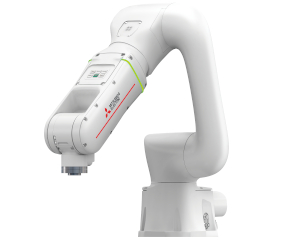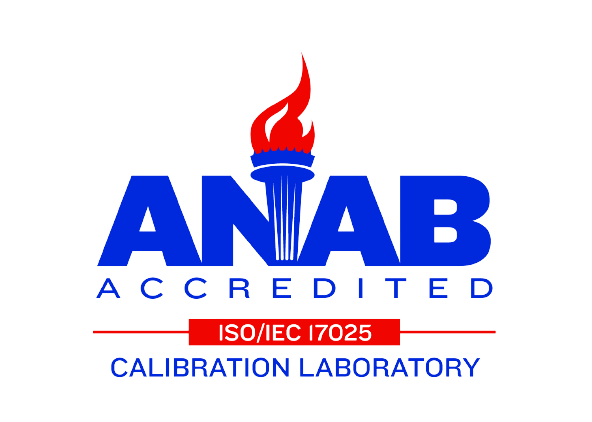Here we explain what is a cobot. A cobot or collaborative robot, is a type of robotic system specifically designed to work alongside humans in a shared workspace. Unlike traditional industrial robots, which typically operate in isolated, fenced-off areas for safety, cobots are equipped with advanced sensors, cameras, and software that allow them to safely interact with people. They are programmed to perform repetitive, precise, or physically demanding tasks, making them a valuable asset in industries like manufacturing, healthcare, logistics, and more. Cobots are celebrated for their user-friendly programming interfaces, compact size, and versatility, which make them accessible to small and medium-sized enterprises as well as large-scale industries.
The Melfa Assista Collaborative Robot exemplifies the capabilities of what a cobot is, offering precision, speed, and adaptability in a range of applications. With a focus on intuitive operation and seamless integration, the Melfa Assista stands out as a reliable solution for tasks requiring both high accuracy and safety. Its compact design ensures it can fit into tight spaces, while its ability to work hand-in-hand with humans maximizes efficiency without compromising safety. For businesses looking to enhance productivity while maintaining flexibility, the Melfa Assista demonstrates the transformative potential of cobots in creating smarter, more collaborative work environments.
Cobots in the Field: Transforming Production Processes
A collaborative robot, or cobots, are increasingly being adopted across industries to enhance production efficiency and flexibility. Here are some real-world scenarios where cobots are making a significant impact.
1. Automotive Industry: Assembly Line Assistance
Scenario: A major automotive manufacturer integrates cobots into their assembly lines to assist with repetitive and precise tasks, such as installing bolts, assembling small parts, and applying adhesives.
Improvement:
- Cobots work alongside human workers, reducing physical strain and repetitive motion injuries.
- Faster assembly times and consistent quality of work improve overall productivity.
- Workers can focus on more complex tasks requiring judgment and creativity.
2. Electronics Industry: Precision Assembly
Scenario: A smartphone manufacturer uses cobots to assemble tiny components like circuit boards and chips.
Improvement:
- Enhanced precision ensures fewer defects and higher reliability of the final product.
- Cobots can operate continuously, increasing production throughput.
- Human employees are relieved from eye-straining, meticulous work and can supervise the process.
3. Food and Beverage Industry: Packaging
Scenario: A food production company employs cobots to package products into boxes and prepare them for shipment.
Improvement:
- Cobots efficiently handle various packaging sizes and weights without downtime.
- Improved consistency and accuracy in packaging reduce waste and errors.
- Employees are reallocated to tasks like quality inspection and logistics planning.
4. Metalworking Industry: Machine Tending
Scenario: A metal fabrication company uses cobots to load and unload CNC machines, grinding equipment, or laser cutters.
Improvement:
- Cobots ensure machines operate continuously, maximizing output.
- Human workers are no longer exposed to potentially hazardous environments.
- The company reduces downtime and increases productivity.
5. Manufacturing Industry: Cobot Welding Automation
Scenario: A metal fabrication company integrates cobots into their welding operations to handle repetitive and precise welding tasks, such as MIG, TIG, and spot welding. Understanding what is a cobot, these collaborative robots work alongside human welders, enabling companies to scale production while maintaining high quality and safety standards.
Improvement:
- Increased Efficiency: Cobots perform continuous welding operations without breaks, significantly speeding up production timelines.
- Enhanced Precision: The cobot’s ability to follow exact welding patterns ensures consistent weld quality, reducing the need for rework and improving the durability of the final product.
- Improved Safety: Cobots take over hazardous welding tasks in environments with high heat, sparks, or fumes, keeping workers safe.
- Cost Savings: Businesses reduce labor costs and material waste, as cobots optimize weld placement and minimize errors.
6. Healthcare: Medical Device Manufacturing
Scenario: A company manufacturing surgical instruments employs cobots to assemble and test intricate devices.
Improvement:
- Cobots provide consistent precision, which is critical in maintaining stringent quality standards.
- Automation speeds up the production process while maintaining compliance with healthcare regulations.
- Skilled technicians can focus on research and development of new devices.
7. E-commerce and Logistics: Order Fulfillment
Scenario: A fulfillment center deploys cobots to pick, sort, and pack customer orders.
Improvement:
- Cobots increase order accuracy and speed, meeting the high demand during peak seasons.
- Workers collaborate with cobots for tasks like inventory management and custom packaging.
- The warehouse operates more efficiently, reducing lead times and costs.
8. Pharmaceutical Industry: Sterile Manufacturing
Scenario: A pharmaceutical company uses cobots in sterile environments for tasks like mixing compounds, filling vials, and labeling.
Improvement:
- Cobots ensure compliance with sterile manufacturing protocols by reducing human contact.
- Precision and consistency in drug formulation reduce waste and enhance product safety.
- Human workers focus on monitoring and controlling production lines.
9. Small and Medium Enterprises (SMEs): Multi-tasking
Scenario: A small furniture manufacturer uses cobots for sanding, polishing, and varnishing wooden components.
Improvement:
- Increased flexibility as cobots can be reprogrammed for different tasks.
- Improved productivity helps the company scale production to meet increased demand.
- Reduced costs make automation accessible even for smaller businesses.
These examples illustrate the versatility of cobots in optimizing production across various industries. Understanding what is a cobot, we see that cobots not only improve efficiency but also create safer workplaces and allow human workers to engage in higher-value tasks.
Melfa Assista Collaborative Robot (Cobot)
Discover the future of automation with the Melfa Assista Collaborative Robot, a cutting-edge cobot designed to revolutionize your production processes. Engineered for precision, flexibility, and ease of use, the Melfa Assista excels in tasks ranging from assembly and packaging to inspection and machine tending. Its intuitive programming and advanced safety features make it the ideal choice for businesses of all sizes, enabling seamless collaboration with human workers while boosting productivity. Don’t miss the opportunity to transform your operations. Learn more about the Melfa Assista Cobot today.
How useful was this post?
Click on a star to rate it!
Average rating 0 / 5. Vote count: 0
No votes so far! Be the first to rate this post.
We are sorry that this post was not useful for you!
Let us improve this post!
Tell us how we can improve this post?



